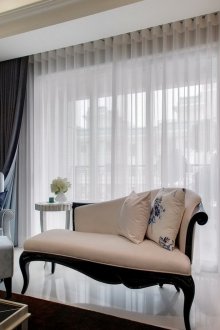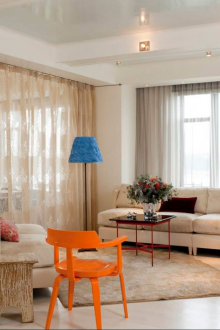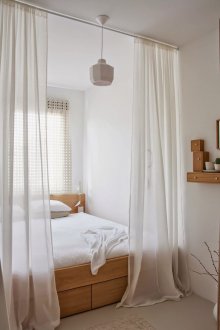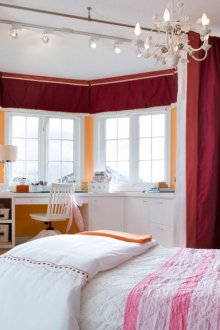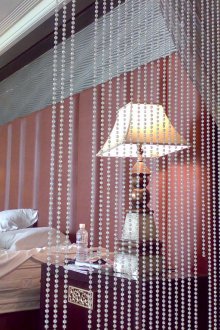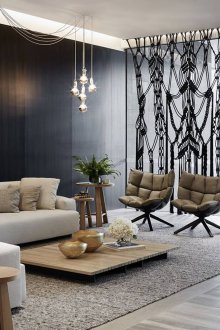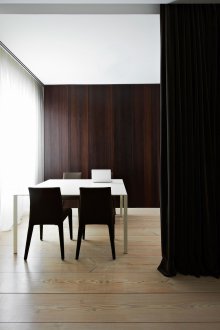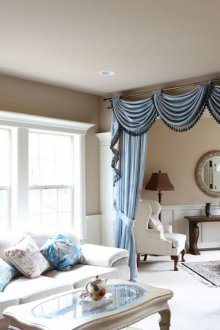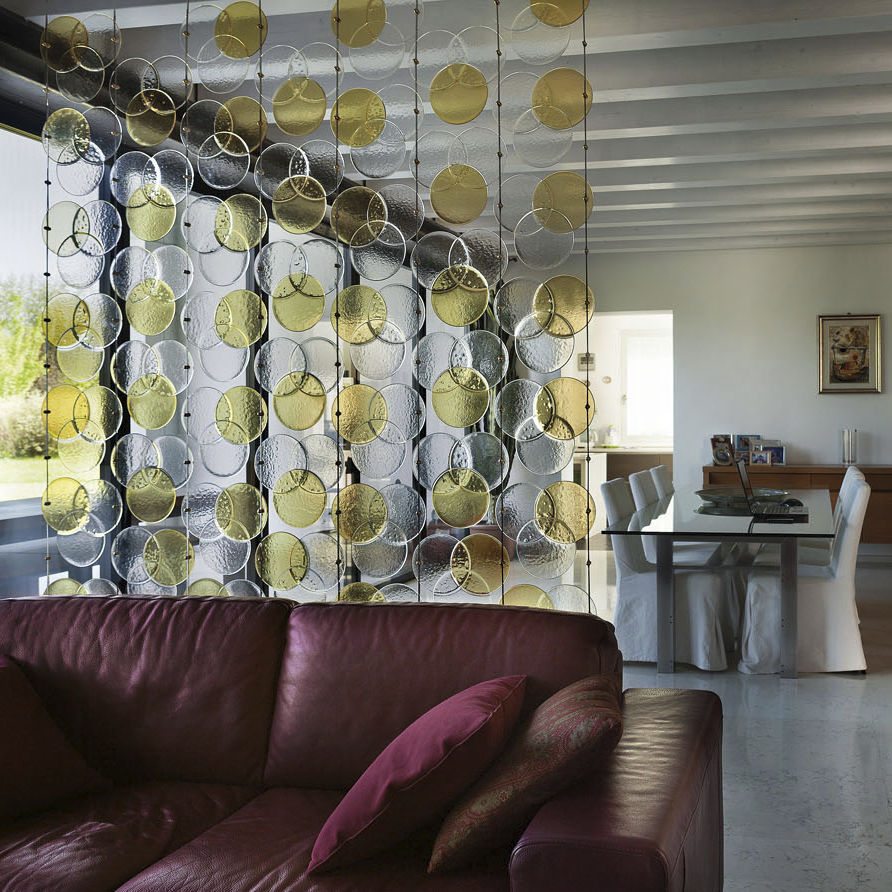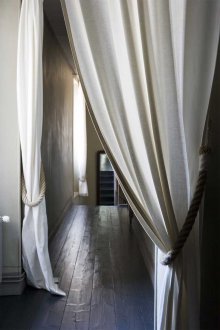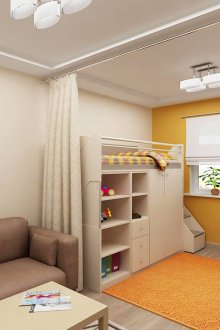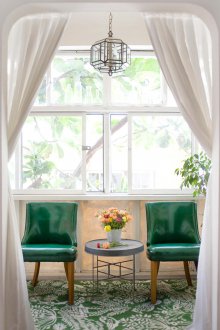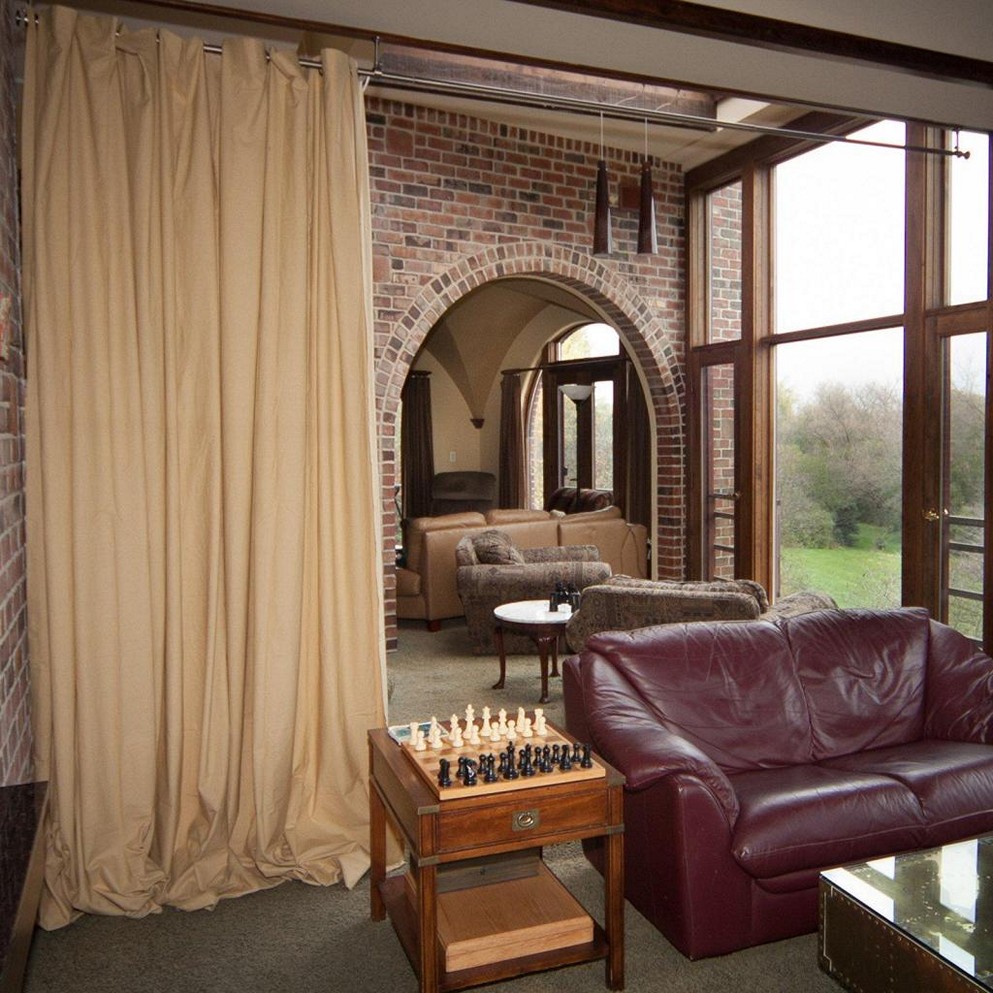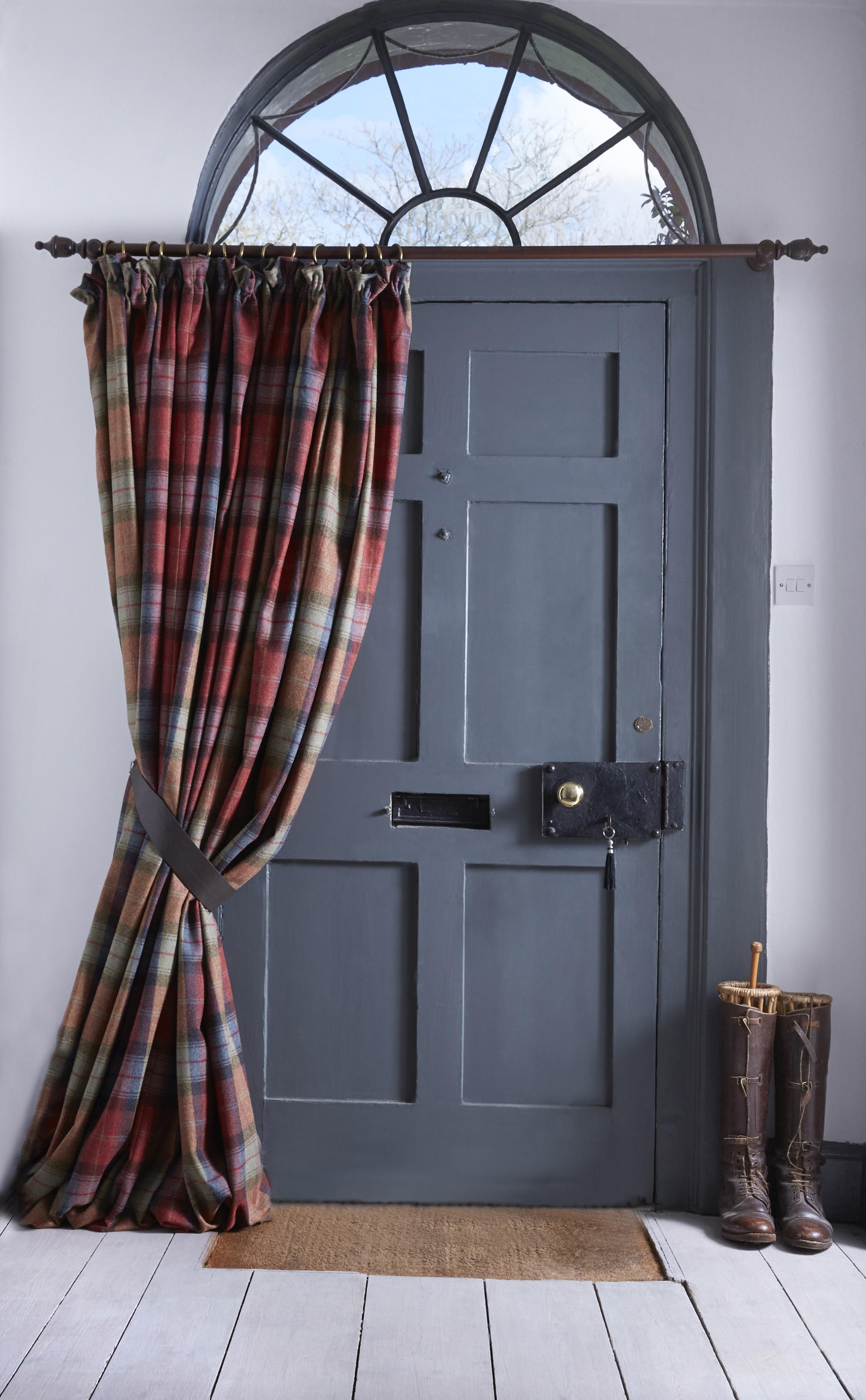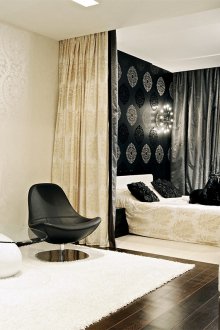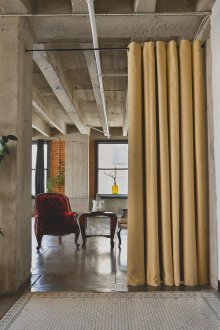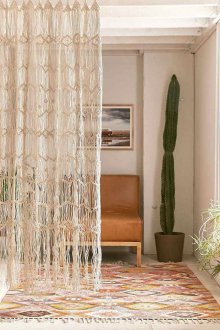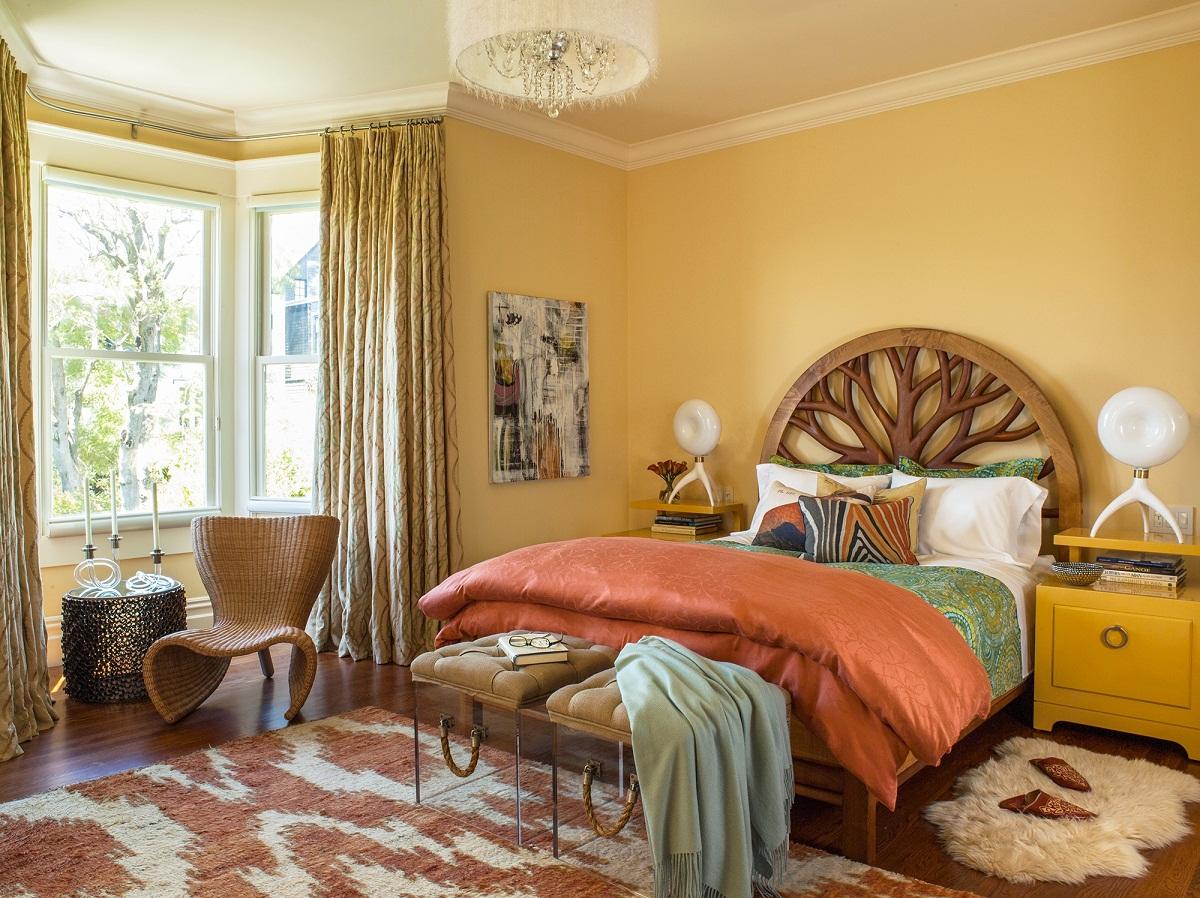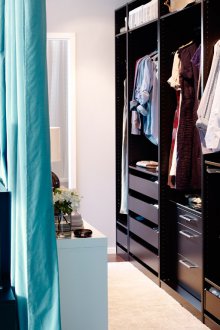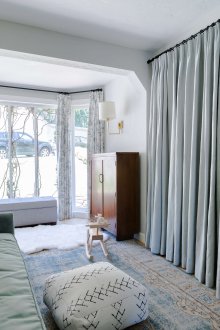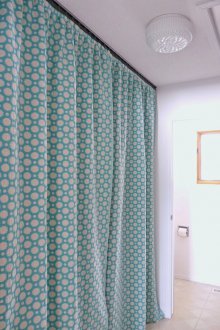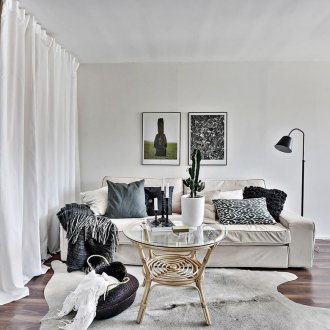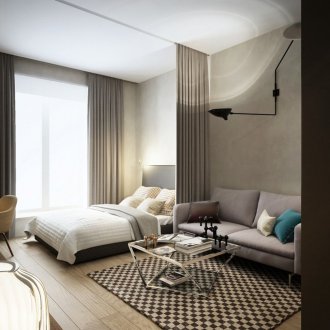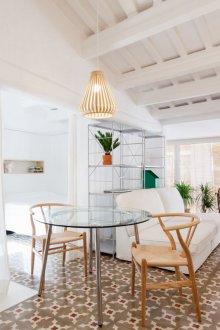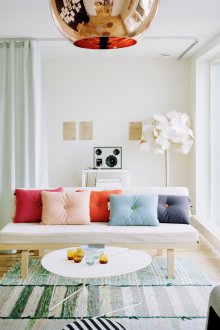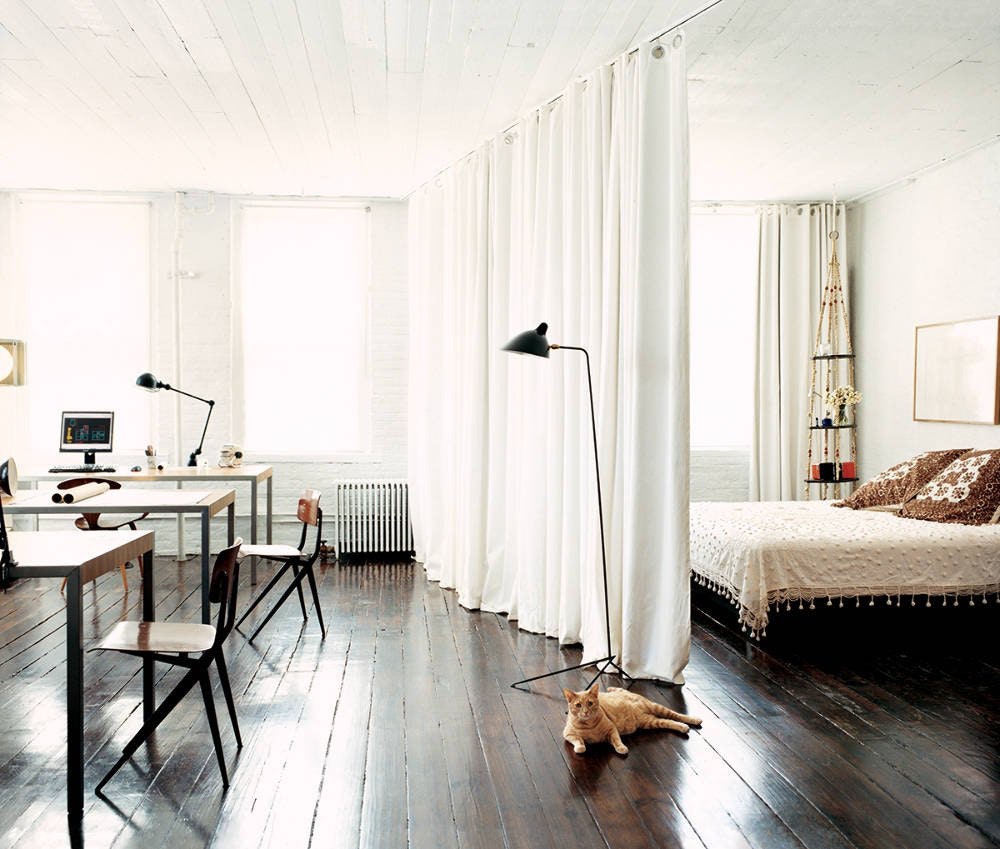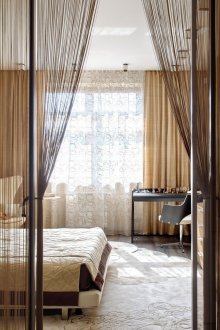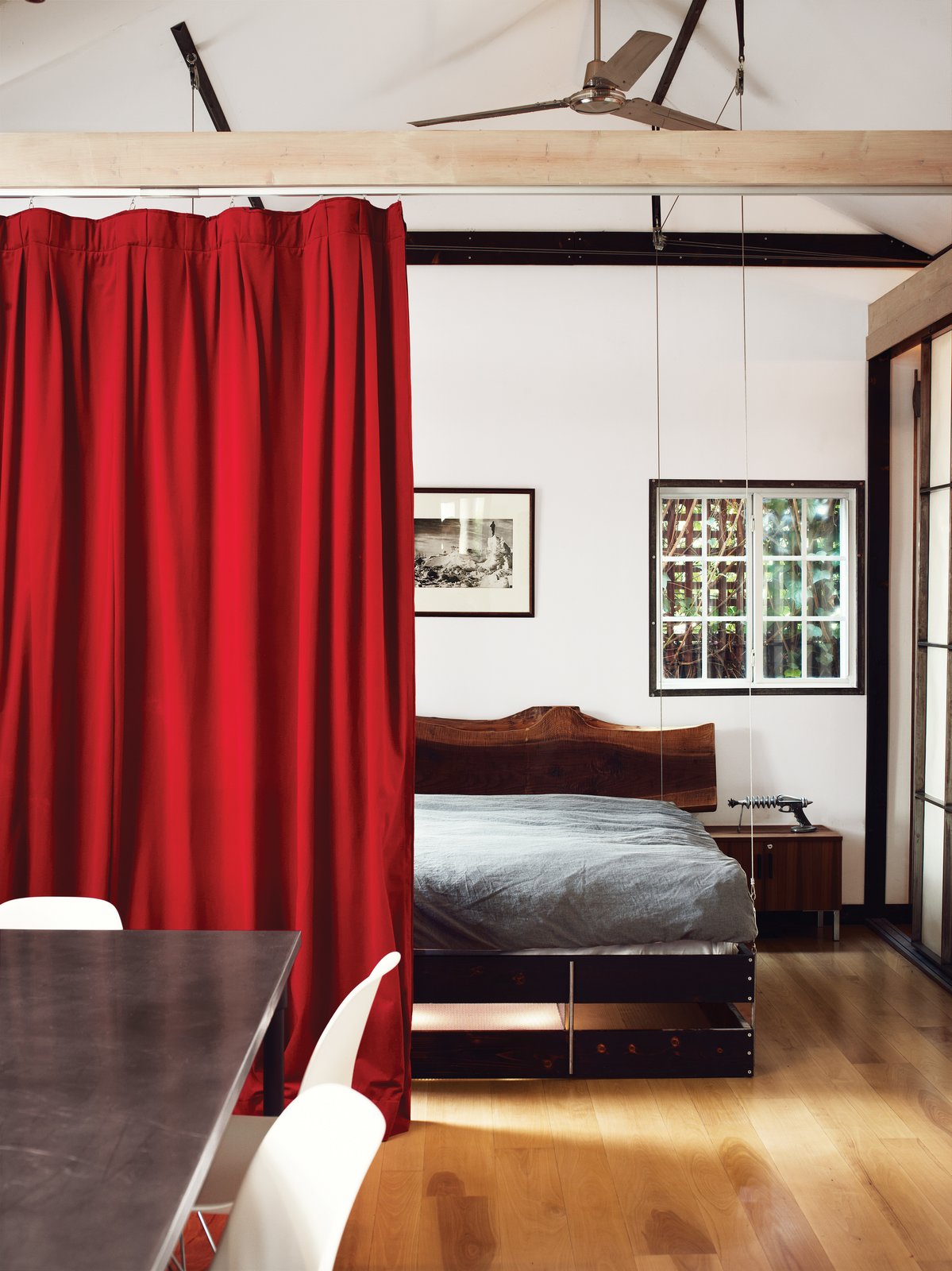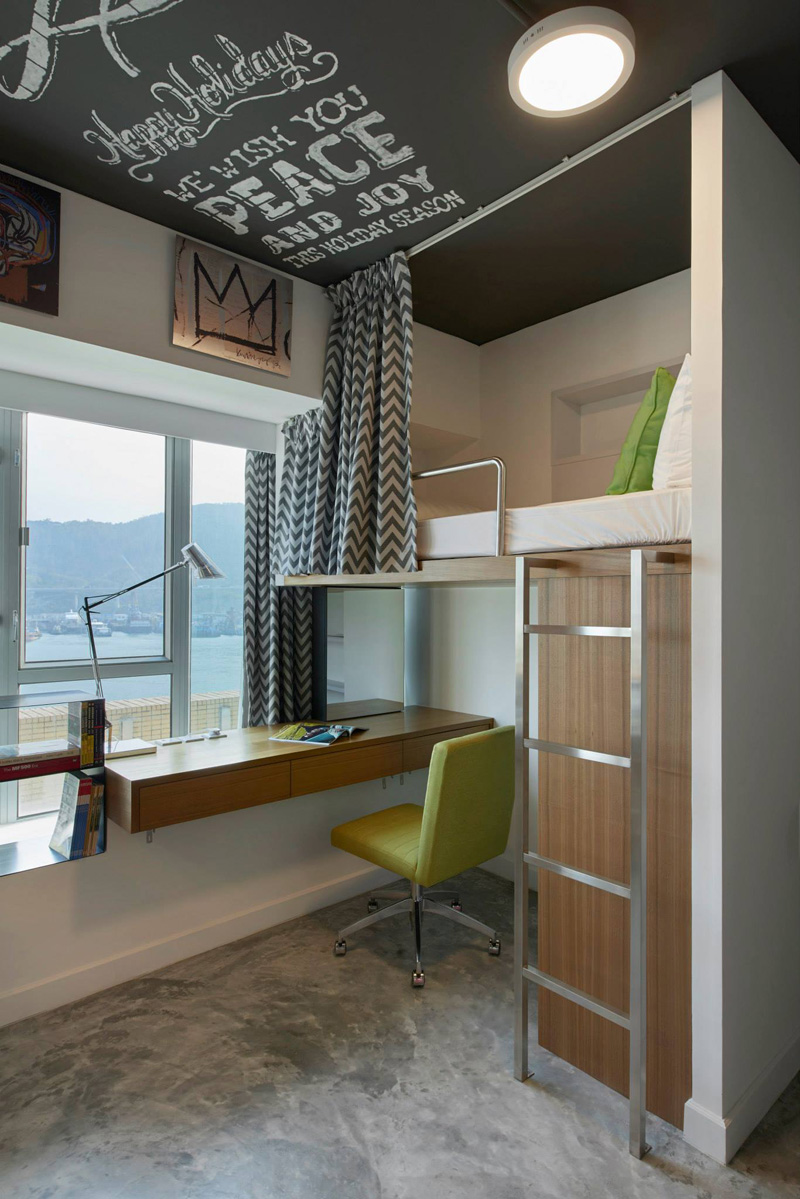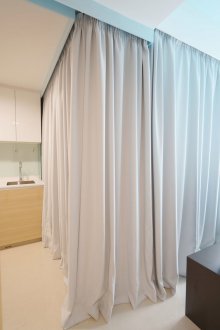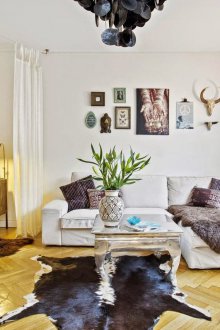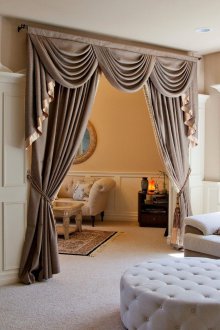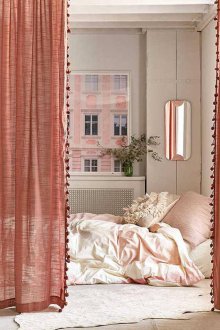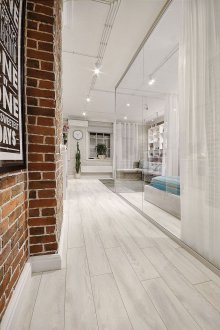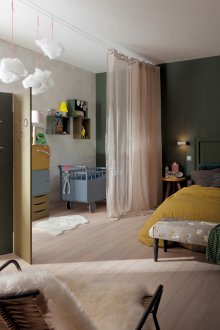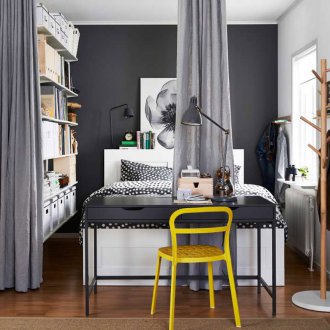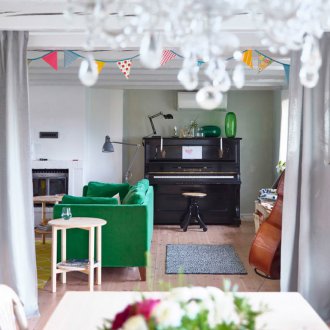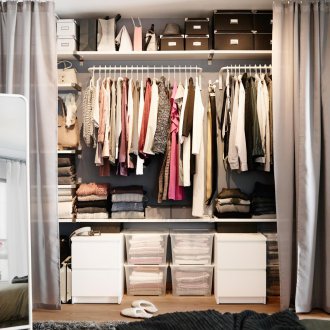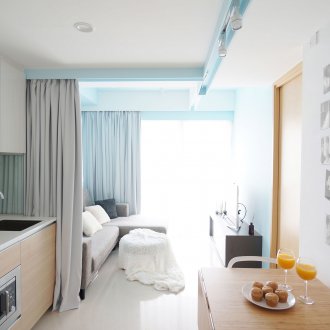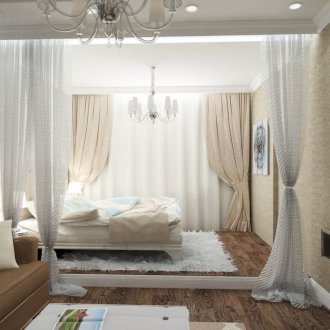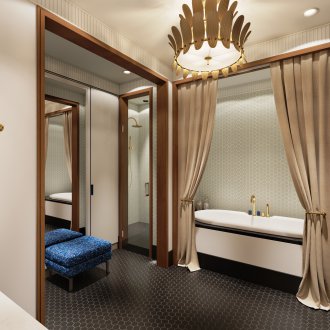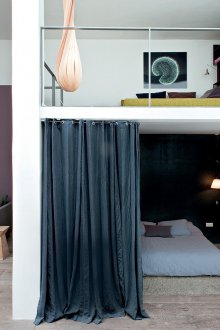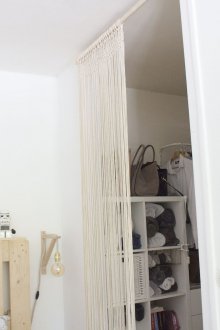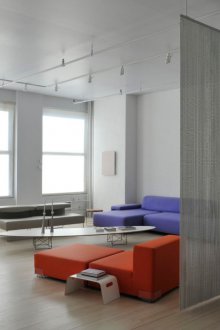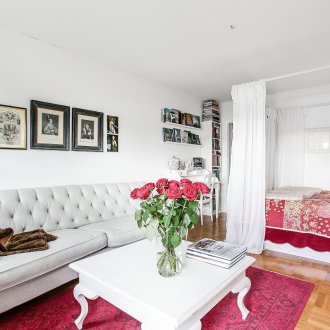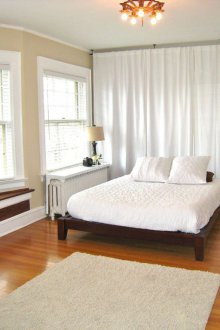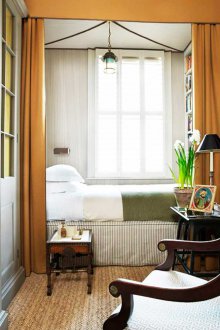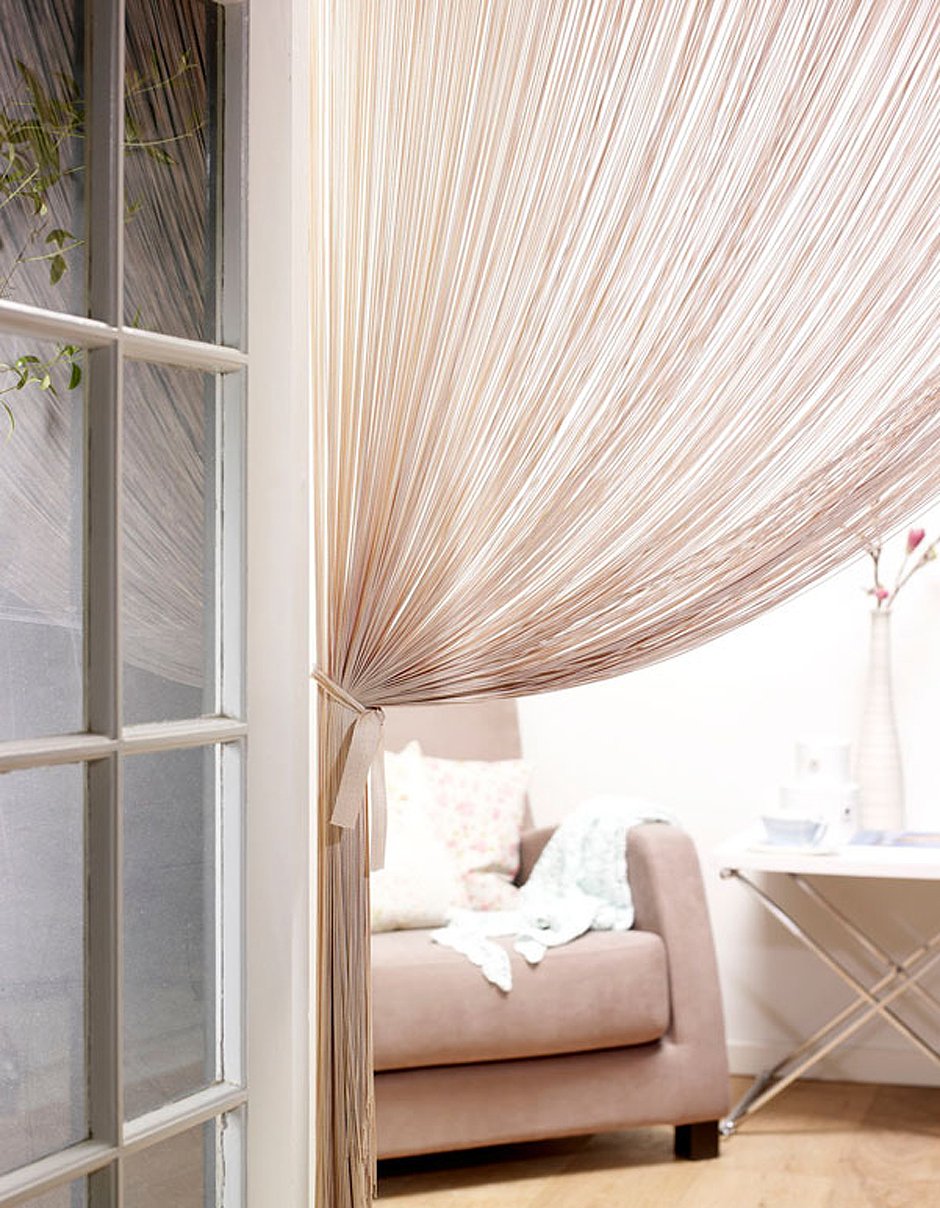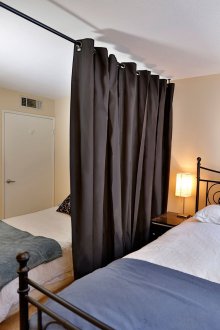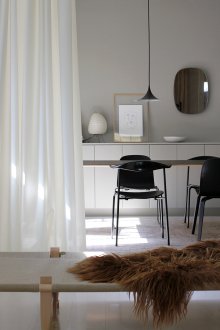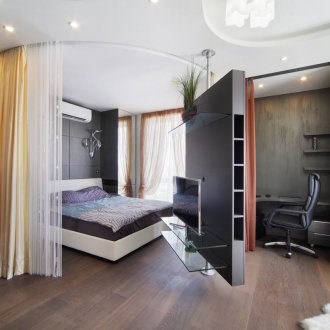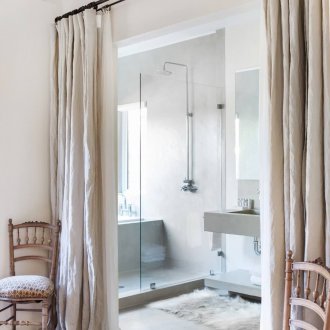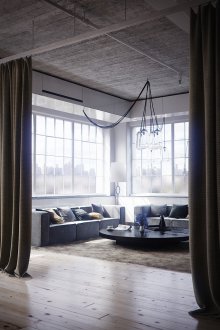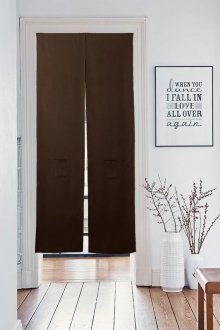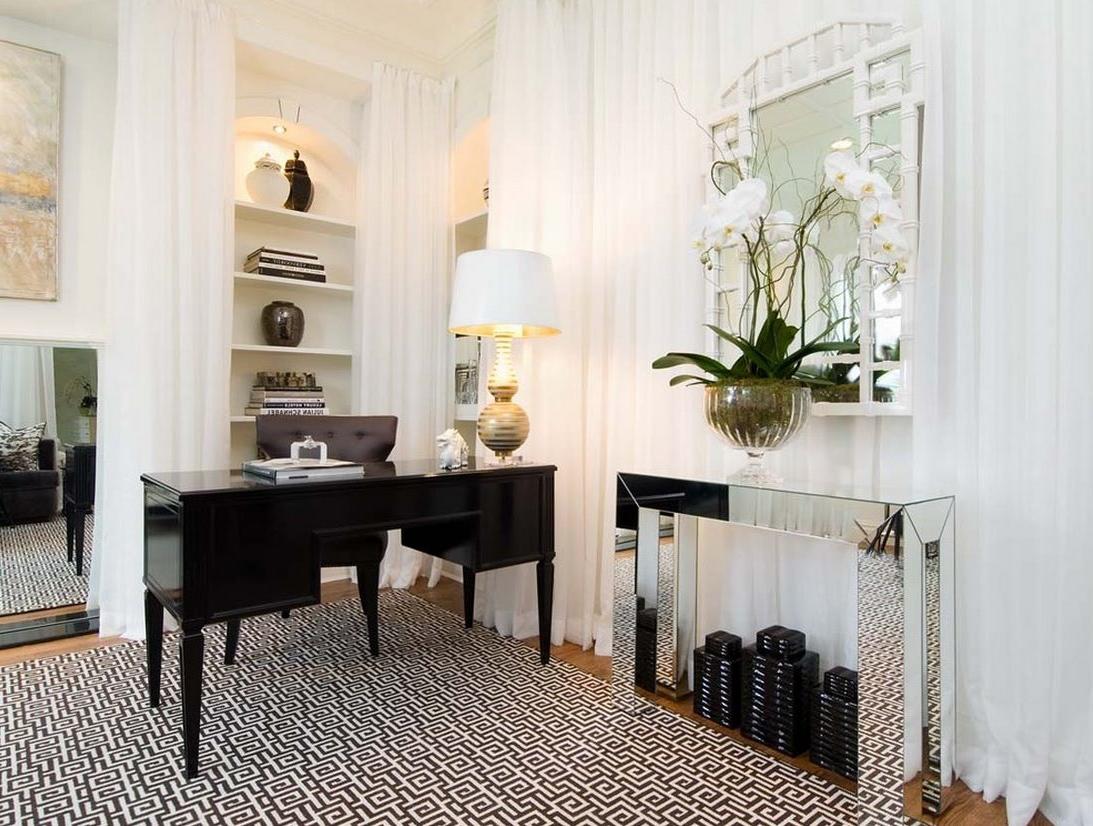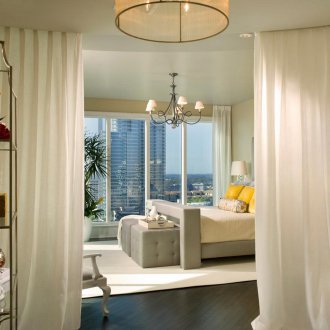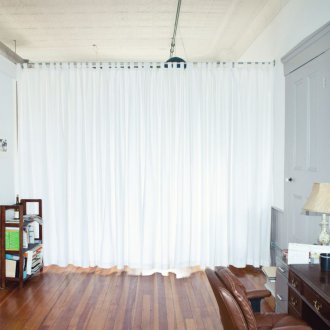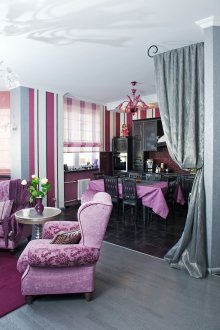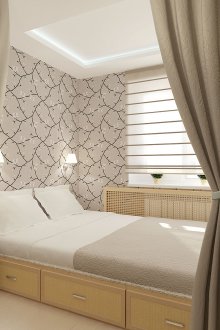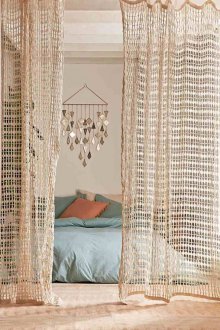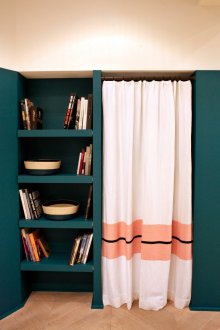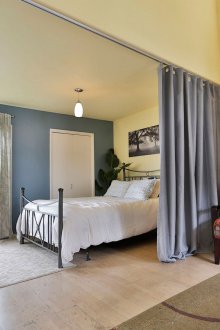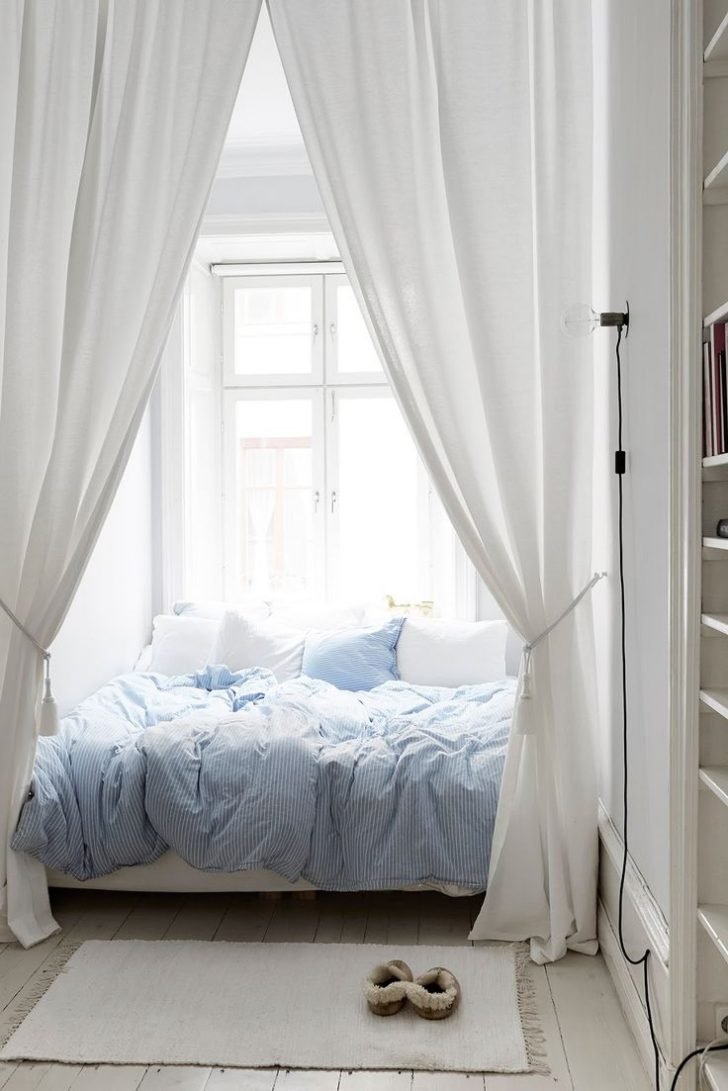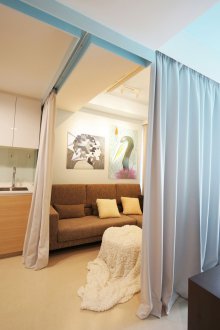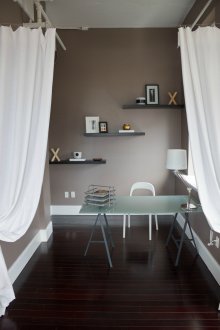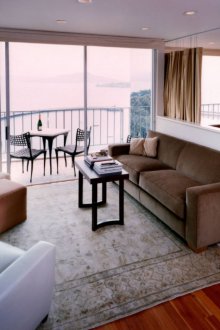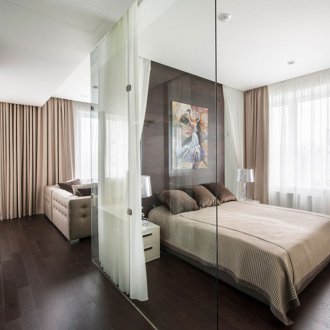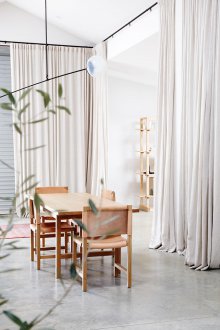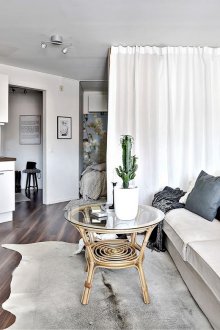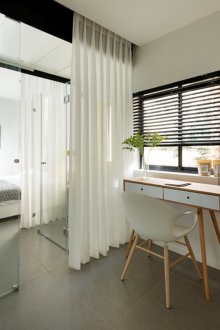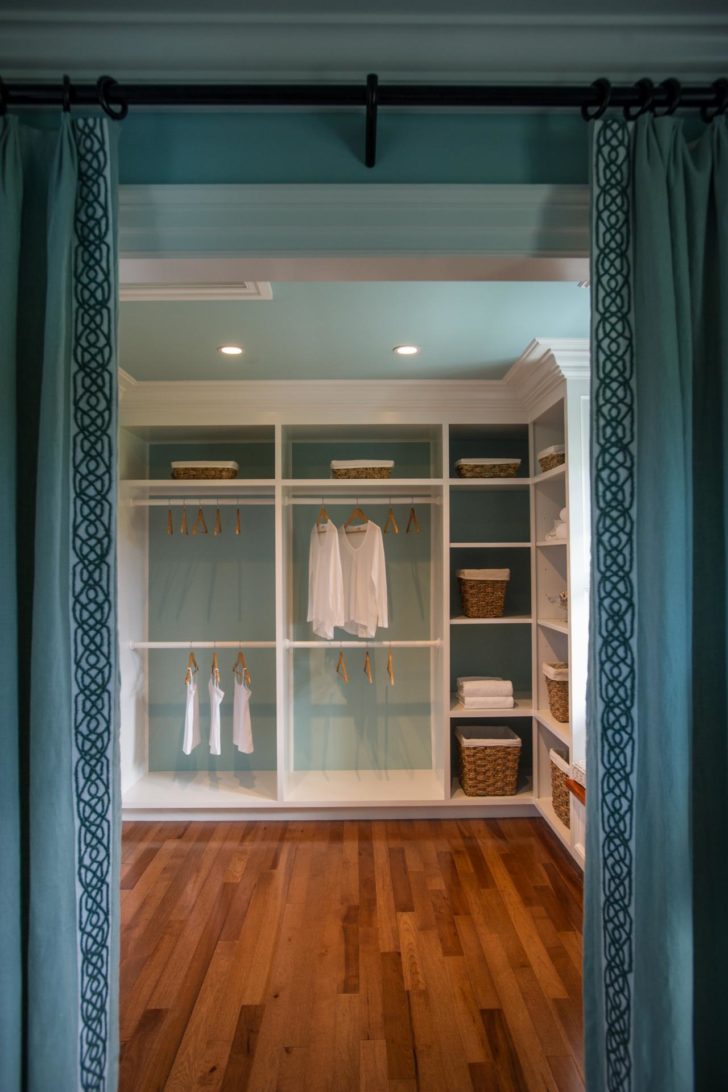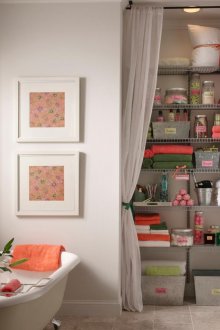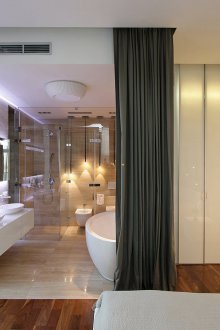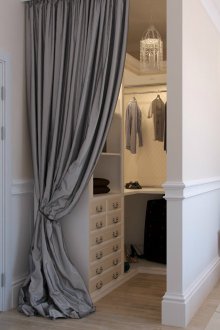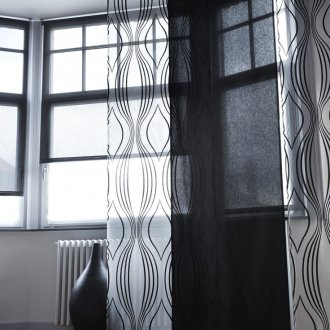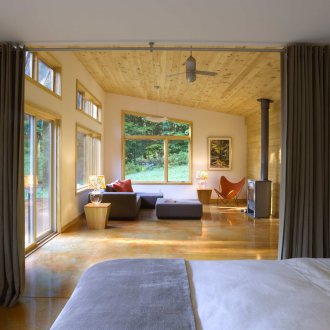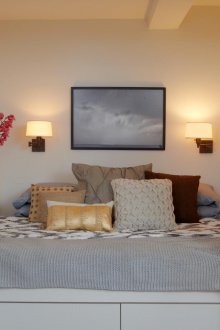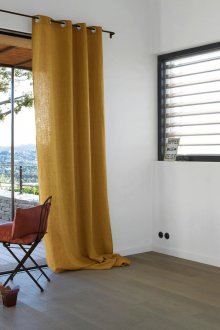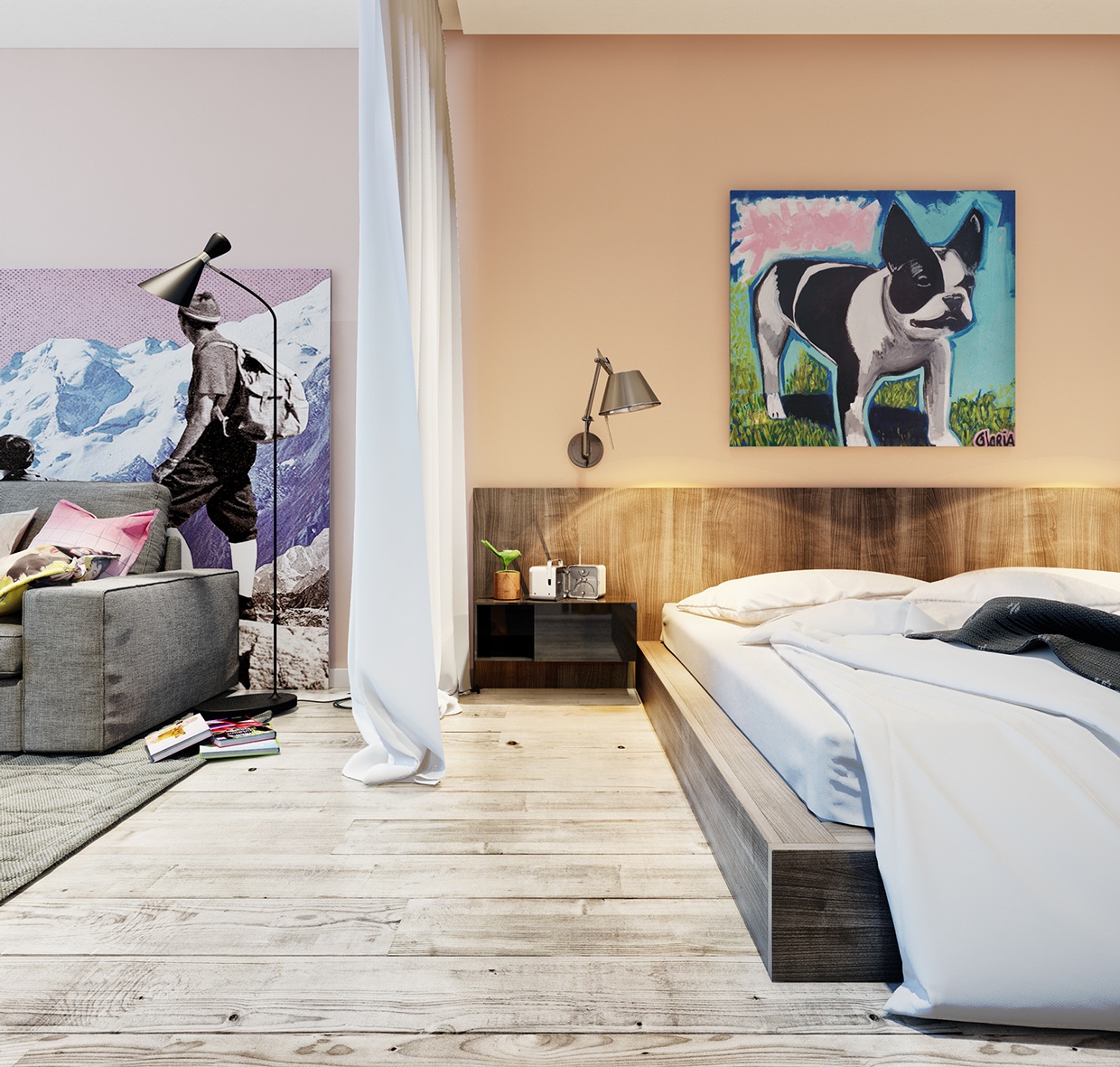Zoning by curtains is an easy tool for cardinal transformation of a room (92 photos)
Content
- 1 Zoning using curtains: the essence and advantages of an interior solution
- 2 Zoning a Room Using Curtains: Classification of Techniques and Techniques
- 3 Classic Design Solutions
- 4 Original thread curtains
- 5 Rolshtora and blinds
- 6 Zoning by Japanese curtains
- 7 Types of fabrics and rules for their use
- 8 Zoning of the living room with curtains: always appropriate sliding partitions
- 9 Decoration and zoning of the bedroom with curtains
- 10 Interior design with kitchen zoning
- 11 Elegant solutions for children's rooms
- 12 Zoning and style: an overview of key patterns
- 13 Tips for choosing and using textiles
We have known zoning with curtains since the times described only in legends and fairy tales: then silk and organza were used to decorate the dwellings, and the sleeping place was necessarily hidden behind the rich embroidered canopies. Features of modern styles make it possible to use these techniques today: zoning the space with curtains looks just as impressive and presentable.
Zoning using curtains: the essence and advantages of an interior solution
In what cases is the use of such soft partitions appropriate? First of all, where every centimeter of usable area counts (the thickness of the rigid structures does not always fit into the layout of the room). What tasks can be solved:
- delimit the hall into the living room, a place for secluded relaxation, a work area, etc .;
- isolate an improvised study in any room;
- equip the bedroom with a dressing room, a beauty zone;
- re-planning the nursery according to the needs of boys and girls;
- divide the kitchen into the dining room and household segment;
- separate the kitchen and bathroom in the studio apartment.
The purpose of using curtains is not only the arrangement of functional zones, they carry an aesthetic load, also with their help it is easy to decorate arches, dimensional doorways.
If we compare the zoning of the room with curtains and the possibility of installing frame partitions (both stationary, and sliding, and mobile), we can highlight the obvious advantages of the first method:
- relatively affordable cost of base material. Even premium fabrics are significantly cheaper than the simplest false walls, glass or drywall panels;
- ease of installation and replacement, care. Curtains do not need special supporting structures, for their fixation a primitive cornice is enough;
- even voluminous categories of textiles do not eat up useful space, it is especially inconvenient to consider other zoning methods associated with the installation of fasteners in this aspect;
- one of the key strengths is the reversibility of the process. If the type of fabric walls is no longer inspirational, at any time replace them with others or completely remove them;
- all stages of the process can be easily done with your own hands.
Finally, the curtains allow you to mask outdated repairs or flaws remaining after it.
Zoning a Room Using Curtains: Classification of Techniques and Techniques
Designers offer the following isolation methods:
- local or complete;
- aesthetic or practical;
- permanent or temporary.
Curtains can be fixed by hanging or frame method. In the first case, there is a need to create a rigid frame; it is subsequently tightened with a canvas.Manufacturers offer a prefabricated and integral basis, moreover, sectional modifications are more popular. Hanging variations are formed according to the principle of window blinds, the fabric can be hung on a string or ceiling cornice.
Next, we will consider several types of partitions from textiles.
Classic Design Solutions
In this scenario, traditional curtains are used. If there is a task of isolating a berth, it is better to give preference to dense curtains - they more than others correspond to the effect of monolithic walls.
Heavy curtains are best hung on thick rings moving within the massive cornice. This approach is very attractive from an aesthetic point of view, the curtains form neat folds, the rings will not allow them to sag. If zoning of a one-room apartment has only decorative purposes, it is permissible to use light translucent fabrics that glide along invisible thin strings.
Original thread curtains
They allow for visual localization, serve to draw the semantic boundaries of the sites. Translucent curtains will not become an obstacle to the visibility of the room, the penetration of light, they avoid the effect of weighting details.
Often, filament compositions are used to focus the workspace. On the other hand, they are appropriate when arranging a room for parents and an infant. Here, firstly, adults find the intimate zone necessary for psychological comfort, and secondly, they can easily look after their baby. Such a solution contributes to the natural circulation of air, it collects less dust compared to conventional curtains.
An alternative can be called sets of beads - original, bright, textured, able to take the place of the main emphasis in the decoration of the room. Often they are assembled with their own hands, and the result is an exclusive interior decor.
Rolshtora and blinds
Rolshtors carry out mainly camouflage functions: unsightly parts of the room can be hidden behind canvases moving on rails. For example, with their help it is easy to hide the dressing room, pantry, workshop, beauty space from prying eyes. The main advantage of this method is its high practicality, especially if you choose PVC materials: they do not absorb odors and impurities, they are easy to care for, and therefore they are actively introduced into areas adjacent to the kitchen and bathroom.
Connoisseurs of convenient and concise solutions will like vertical blinds: in the assembled state they occupy a minimum of space, do not catch the eye.
A separate category is made up of Japanese curtains - incredibly fashionable and comfortable, concise and compact. They should be considered in more detail in a separate section.
Zoning by Japanese curtains
Partitions are made up of several panels - the same rectangular paintings. The color and density of the fabric is selected based on the design of the room and the functional load: someone needs a “wall” - a dull separation of the room, and someone needs a symbolic translucent partition.
The panels have special hard inserts, due to which during movement they do not deform, do not form folds. Planks can be compactly picked up (then they will be located parallel to each other) or installed in a row, that is, create a single canvas without gaps, make up a ladder.
The component responsible for the movement of the curtains is a track profile fixed to the ceiling. Its design includes several guides - each of them is responsible for its own fabric panel. The number of guides is usually in the range of 5-10 pieces.As a standard, the canvases cover the space from floor to ceiling, you can find options even shorter, but it is likely that they will not provide such an integrity of the interior as their traditional counterparts. The width of the panels usually varies between 60-80 cm.
If you have planned the introduction of Japanese curtains in the interior, keep in mind that their design must comply with the life principles of the people of the country where they come from: it is customary for them to avoid clutter by all means, minimalism is welcomed in everything. All experiments with the external design of the septum should be reduced only to a change in the colors and textures of the fabric.
Accessories here will be out of place, the panels should be straight, with a clear rectangular shape. The surrounding interior should also correspond: it is better to give preference to concise solutions. There should not be bulky bulky furniture, an abundance of accessories and textile accessories. It is important that there is a lot of air and light.
Such partitions for zoning space are introduced into rooms that simultaneously perform many functions and serve as housing for several people. It can be one-room apartments or studios, children's rooms for several teenagers, combined living rooms, kitchens and bedrooms, halls and dining rooms.
If you want to order Japanese curtains made of thick fabric, keep in mind that the part of the room remote from the window in this case will be more obscured, gloomy. It is better to take care of the additional lighting of this segment of the room in advance with the help of a floor lamp, spot ceiling or table lamps, sconces.
Stretch ceilings are not adapted for fixing track profiles, guides are installed on a separate metal profile.
Using the screen panel, you can replace the door, the sliding design of the sliding wardrobe, cover a niche or shelf. Experts advise: if you want to visually expand a small space (say, a room of 18 square meters), make a partition from the same material as the curtains.
This zoning method can be refreshed if 2 fabric colors are used to make the panels. As a result, the decomposed partition will decorate each half of the room in different ways. Bright partitions, made in the tone of the walls, merge with the decor, visually expand the room. Translucent screens that look like frosted glass are often used to divide the living room into a working and dining area.
If you put a picture on the canvas according to the principle of photowall-paper, an attractive mobile wall is formed, which will not only isolate the necessary parts of the room, but also enliven the interior, and help to place accents in an interesting way.
Japanese panels can even be used to transform the bathroom: you just need to choose an easily washable material with high water-repellent properties.
Types of fabrics and rules for their use
Decorators actively use:
- cotton;
- jacquard;
- organza;
- linen;
- tulle;
- bamboo.
If individual tailoring of curtains is planned, all the material should be cut from one roll: the same fabrics in other rolls can vary slightly in color.
In order for ideas on zoning the room to be adequately implemented, several recommendations must be followed when planning the partition:
- The fabric must have a certain degree of stiffness, allowing you to keep in shape. In this case, the material will form beautiful folds, this will minimize the effect of sloppiness from the use of large volumes of textile;
- Curtains should have a maximum length, that is, reach the floor or lie on it - then the space behind the partition will be completely separated;
- Combinations of fabrics look interesting.The cornice can combine a dense curtain and weightlessness of tulle: when the translucent component is in favor, the room is filled with light and air, with the activation of the monolithic part, it is possible to achieve complete isolation;
- Since zoning is usually carried out in small-sized rooms, priority should be given to partitions made of translucent or dense light fabrics. They will sufficiently divide the room, while not overly pretending to be useful;
- Heavy dark curtains are truly appropriate only for the localization of a berth.
For studio apartments, a combination of climbing plants and filament curtains is relevant - this combination guarantees a summer mood.
Zoning of the living room with curtains: always appropriate sliding partitions
Why is it worth installing an additional curtain rod in the living room? Firstly, if it is a one-room apartment, textiles will help to demarcate the site without significant material and physical investments. Residents will find the desired privacy, and when there is a reason - they will open the curtains and get a spacious place for joint leisure. Zoning the living room with curtains can be performed for the following purposes:
- creation of 2 rooms from one - a large translucent composition, parallel to the window, will help. It can cover the entire width of the room;
- L-shaped compartment of the corner, allowing you to create an isolation place for sleep, work, hobby;
- isolation of a berth using an impromptu canopy. In the southern latitudes, it has a second function - it protects users from mosquitoes.
The living room will look larger if, during its decoration, preference is given to airy materials that can transmit sunlight. The closer they are in color and design to the decoration of the walls, the more harmonious the interior looks.
An original technique and a really good option for this room is the use of a photocurtain and paintings that have a 3D pattern.
Decoration and zoning of the bedroom with curtains
Depending on which place you want to localize, practice the following zoning the bedroom with curtains:
- isolation of the bed itself - light tulle, flying fabrics, canopies are used. The solution looks organic if the room is decorated in an oriental style. Practical natures fit tight curtains, assembled in the form of a rectangle or oval;
- creation of a zone for the baby - calm colors and translucent textures are appropriate here;
- arrangement of the wardrobe - in this case, the fabric for zoning should be such that things are not visible through it;
- allocation of working space - it is better to place it closer to the window, otherwise additional lighting will be needed. Modern styles allow the introduction of canvas without waves, Roman blinds, thread curtains.
When you need to mask beauty space, a corner located near the bed can be decorated with a rich composition of beads.
If there are alcoves in the bedroom, nothing but curtains will help get rid of the effect of the closet - if you use hard partitions, the niche will seem tightly closed. Tissues, in turn, contribute to natural ventilation, are psychologically better perceived, create an atmosphere of privacy.
Interior design with kitchen zoning
The vast kitchen space needs the isolation of the dining room and household area. The color palette of the partition usually combines these two links; here it is better to choose non-marking shades or fabrics that easily part with dirt. Waving and light textures are extremely undesirable, as they can melt, catch fire.
In the kitchen, cotton or linen blend materials are most often used - they help to comfortably equip the room, attract with its naturalness and environmental friendliness.Bamboo blinds and blinds are a universal decor and a practical separator, they fit into most laconic styles, are not afraid of pollution, and quickly cleaned.
Also, Japanese curtains will fit well into this room: their evenness and tight fixation will not interfere with work, they are safe and undemanding in care.
Elegant solutions for children's rooms
Kids need an individual space so that they feel free and at the same time safe. To divide the room inhabited by several children or to focus on the purpose of each zone in the room, you can use a wide range of textile tools.
In particular, if the child is still too small and cannot be left out of sight for a long time, it is worth using transparent textures. With them, the baby will be given enough privacy, moreover, parents will be able to control every phase of his life.
If you want to allocate a crib, for boys it is better to choose canopies with marine life, flying objects, space themes. Girls prefer lush canopies that turn a bed into a princess bed.
If the room is designed for heterosexual children, curtains are the most practical, easy and child-friendly solution. The younger generation will be able to easily control the level of lighting, collect them and lower them before bedtime.
In girls' rooms, the use of guipure and lace trim on walls and curtains became fashionable. Boys prefer a frame filled with meaning - for example, curtains with a map of the world or animal life.
Zoning and style: an overview of key patterns
Stylistic nuances require a separate consideration. Although textile partitions are permissible even in the loft direction, they are nevertheless more appropriate in the following styles:
- shabby chic;
- vintage
- country;
- Provence
- rustic;
- modern.
Since curtains can be used not only for window frames and zoning of the area, but also for masking doorways, built-in wardrobes, structures need careful planning.
Popular among contemporaries, filament curtains give the interior airiness, leave a feeling of lightness, they can be used in Provence, country, modern style. The use of metal chains, beads, shells in a combination is equivalent to the introduction of additional accessories - this is not suitable for every room.
To elegantly complement the village motifs, draperies made from natural textures - cotton, linen, are suitable. Massive wooden cornices are an integral element.
Classic interiors require luxury. Ideal fabrics - velvet, satin, velor, for decoration use fringe, tucks made of a gold cord, lambrequins, voluminous brushes.
Art Nouveau implies textiles made in a deep noble color, for example, restrained decor in the form of a floral ornament. This accent element fits perfectly as a partition for the living room.
Textile zoning tools are partial and complete, expanding vertically or horizontally, mobile and stationary. Thinking about lifting structures? Pay attention to the Roman curtains and French marquises.
Tips for choosing and using textiles
Materials having a pile or a large ornament, heavy, creating dense draperies - they all eat up space, so they are not advisable when redeveloping small rooms. Here fit kiseens, tulle, threads.
If the fabric is difficult to iron, in limbo it will look untidy, and care will be fraught with a number of difficulties. Only smooth folds will become the basis for the monolithic effect and will be perceived as additional walls (which is what is required from a soft sliding partition).
When it is necessary to separate the workplace, it is better to choose a zone near the window. Decorators do not recommend fencing the bed directly at the door - it is better to move it closer to the middle or to completely localize the L-shaped area near the light opening. A good solution for the space at the entrance is a location for receiving guests, relaxing.
If the walls are finished using drawings or bright, complex wallpapers, calm, monochrome curtains for zoning are suitable. Pastel decoration, on the contrary, welcomes contrasting fabrics that can become a juicy designer accent.
Designers advise to adhere to the key rule: a light and cold palette expands the space, warm and dark - makes the room smaller. If the room needs to be divided only into two parts, it is worth giving preference to simple, unobtrusive ornaments, drawings - elaborate design will quickly get bored.
When doubts arise regarding the choice of colors, universal tonality can be adopted - beige, gray, red-brown - they have the least stylistic restrictions.
If the room has only one window, combined solutions will come to the rescue. Heavy and transparent curtains - a harmonious tandem that allows you to remodel the room according to your mood. The technique will become the basis for a clear localization of space, but it will not become an obstacle for the full distribution of natural light: dense curtains will be lowered only when the situation requires, the rest of the time the zoning task will be assigned to transparent ones.
When creating an interior or interior partition, special attention should be paid to the density of the fabric: the functions assigned to the product will be the determining factor. If he is faced with the task of introducing intimacy, restricting personal space and the level of light, it is worth ordering tailoring from viscose, jacquard, and other materials with a high density, which belong to the black-out category. Fulfillment of the remaining tasks will be on the shoulder and less expensive cotton and mixed combinations.
If children frolic in the house, choose fabrics with minimal creasing that do not respond to frequent touches, strong fabrics, even if the colors are not marked. The length of the finished product should be such that it is impossible to step on the lower edge - this simple measure is the key to safe operation and reduces the risk of the web from breaking off the cornice.
Zoning with curtains is a fascinating process that allows you to implement almost any plan. This technique even without excessive efforts seems self-sufficient, incredibly beautiful, complete. Minimal knowledge about the rules of planning and comparing textures, refined taste and a bit of originality - and the room will shine with a new gloss!

